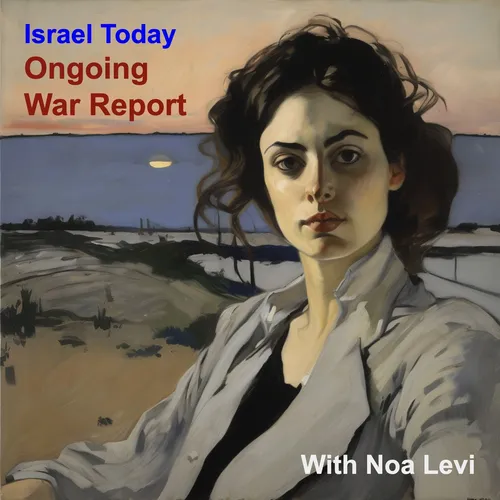Israel Today: Ongoing War Report - Update from 2025-09-14 at 06:08
- Author
- Noa Levi
- Published
- Sun 14 Sep 2025
- Episode Link
- https://www.spreaker.com/episode/israel-today-ongoing-war-report-update-from-2025-09-14-at-06-08--67750689
HEADLINES
Fragile Ceasefire Hinged on Iran Pressure
Hamas Hostages Drive Regional Diplomacy
Israel Prepares Eilat Drill Amid Tensions
The time is now 2:01 AM in New York, I'm Noa Levi and this is the latest Israel Today: Ongoing War Report.
From the newsroom at 2:00 a.m., here is the latest, with context that helps explain why events across the region remain interconnected and how they reverberate beyond Israel’s borders.
Tensions surrounding Iran’s posture toward Israel remain unsettled and the ceasefire environment in the region is described by observers as fragile. While no durable, long-term framework has been publicly finalized in the material available, officials and analysts cautioned that narrow, tactical pauses can quickly unglue if even small incidents flare up along the multiple fault lines that connect Tehran to proxies and allies across the Middle East. In this context, Israel continues to emphasize defensible, proportionate responses to credible threats while pressing partners and allies to sustain pressure on Iran to curb the activities of its regional networks.
On Iran’s proxies, the picture presented by recent reporting shows a difficult operating environment for factions allied with Tehran. Hamas in Gaza remains a focal point of attention given the hostage crisis, and observers note that the group’s operational capabilities appear diminished relative to earlier phases of the conflict. At the same time, many regional actors maintain channels with Hamas leaders, including officials who travel across the Middle East, which underscores the challenge of isolating or constraining the group’s leadership. In parallel, Western discussions about stabilizing the broader region emphasize the need to keep terror networks from regaining momentum and to hold leadership to account for ongoing violence and hostage-taking.
Within Syria, there is continued attention on how political authority is exercised and who holds sway over security and militias along the borders. The articles provided do not include a confirmed report of Bashar al-Assad’s ouster; instead, they highlight ongoing concerns about governance and security arrangements in a landscape where multiple foreign and non-state actors operate. The broader narrative remains that Damascus’ leadership and its alliances are central to the balance of power in the Levant, with Israel repeatedly stressing its red lines and deterrence posture in response to cross-border activity.
Lebanon and Hezbollah are frequently cited in analysis as a critical variable in the regional equation. While the reporting you supplied does not contain a definitive update confirming Hezbollah’s status or Lebanon’s capacity to push the group out, the public discourse continues to focus on the potential consequences of Hezbollah’s activities for border stability and for any future negotiations or escalations. The overarching concern for Israel remains the need to prevent weapons transfers and to deter attacks that could threaten northern communities and the broader security environment.
Hamas remains the central element within Gaza, and the hostage crisis continues to drive a wide spectrum of domestic and international considerations. The hostage issue complicates any assessment of military or political options and shapes how regional actors calibrate their rhetoric and actions. In parallel, reporting notes that there is active international interest in accountability for leaders who have, in some settings, were described as evading consequences, which informs Western diplomacy and security priorities in the region.
On the humanitarian and international front, Canada’s decision to examine the dissolution of Samidoun as a nonprofit underlines ongoing scrutiny of groups linked to support networks for designated terror organizations. The case illustrates how nations are balancing civil society norms...
